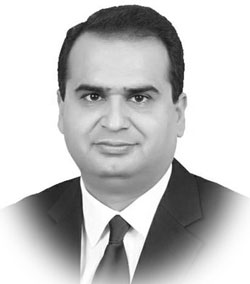THE World Health Organization (WHO) defines child maltreatment as “all forms of physical and emotional ill-treatment, sexual abuse, neglect and exploitation that results in actual or potential harm to the child’s health, development or dignity.” Child maltreatment is classified into four types: physical abuse, sexual abuse, emotional or psychological abuse and neglect.
Child maltreatment has been scientifically associated not only with mental disorders but also with poor academic performance, joblessness, physical disabilities and poor health of the survivor. If proper counselling and rehabilitation services are not provided to the survivor in time, then such a child will not have a normal family, social and school life.
Such children are more likely to become addicted to drugs to relieve themselves of their anxiety or be involved in criminal activities. According to a research study, a nearly 20-year reduction in lifespan was reported among those who had gone through maltreatment experience during their childhood.
Pakistan has over 80 million children and violation of their rights is common practice. Cases of child maltreatment are reported everyday on electronic and print media but such cases are grossly underreported because literacy rate and awareness of the law is low amongst the large population of the country.
Some examples of child maltreatment cases in Pakistan are child sexual abuse (CSA), rape, gang rape, sodomy, violence, murder, abduction/kidnapping, missing children, commercial sexual exploitation of children, child pornography, child marriages, child labour, child beggary, street children, out-of-school children, low birth registration rate, child drug abuse, bullying, corporal punishment, child domestic workers, child malnutrition, infant mortality and health issues etc.
The worst form of child maltreatment is sexual abuse with children. According to the statistics issued by child rights protection organisations, on average, more than 10 children are subjected to sexual abuse every single day in Pakistan.
During the period of first six months from January to June 2021, a total of 1896 cases of child maltreatment were reported from all parts of Pakistan.
Out of these 1896 cases, a total of 1084 cases of Child Sexual Abuse, 523 cases of abduction, 238 cases of missing children and 51 cases of child marriage were reported. In such cases, 53% (1013) of victims were girls, while 47% (883) were boys.
CSA also causes physical and emotional or psychological abuse for the survivor. In CSA cases, abusers are normally from acquaintances, relatives, neighbours and close family friends.
CSA is a taboo subject in Pakistani society, so most of such cases remain unreported because of the fear of social stigmas attached to the survivors or victims and their families, resulting that the actual number of such cases in the country is much higher.
In 99 percent cases of CSA, perpetrators remain unpunished because parties resile from their allegations. Children’s claims of sexual abuse are less likely to be believed and most cases go unnoticed even by their own families.
Although Pakistan has enacted legislation to protect children from maltreatment, the conviction rate in such cases is very low.
This is because of the non-exercising of forensic investigation methods, sluggish judicial system of Pakistan and resiling of complainants from their stances.
It takes a time period of two to five years to reach the final decision in such cases and most cases are compromised between the parties before the final verdict due to lengthy trial period, social humiliation and political, social influence of abuser and his acquaintances.
Some key strategies to prevent the child maltreatment in Pakistan are as under: The problem of child maltreatment in Pakistan is directly linked with socio-economic status of its citizens and widespread poverty in the country.
Pakistan’s economy is not strong and comes under the category of lower-middle income countries. 22 percent of the entire Pakistani population lives below the poverty line.
Poverty is one of the main reasons which leads to child maltreatment. Poor families exploit their children to earn livings for them and involve them in labour, underage marriages, drug abuse, prostitution, pornography and trafficking etc.
So, the Government should develop a national action strategy to address the problems of poverty and socio-economic differences in the country and allocate sufficient budget to relevant ministries for achieving this goal.
Out-of-school children is one of the kinds of child maltreatment and needs the urgent attention of the Government.
Pakistan ranks second amongst the countries in the world where a large number of children do not go to school. Over 23 million children aged 5-16 are out of school in Pakistan. So, a strategy to provide free and compulsory education to out of school children must be adopted by Govt. as promised under the Constitution of Pakistan.
Because child maltreatment cases are reported from all segments of society, ie, poor, middle-class and rich families.
So, the Government should adopt a strategy to create awareness against child maltreatment amongst the general public, legislators/policy makers and children themselves.
Seminars, trainings and awareness material about the child protection issues must be publicized in order to sensitize people about this human rights violation.
—The writer is Advocate High Court/Co-chair, National Action & Coordination Group for ending violence against children, Pakistan.










